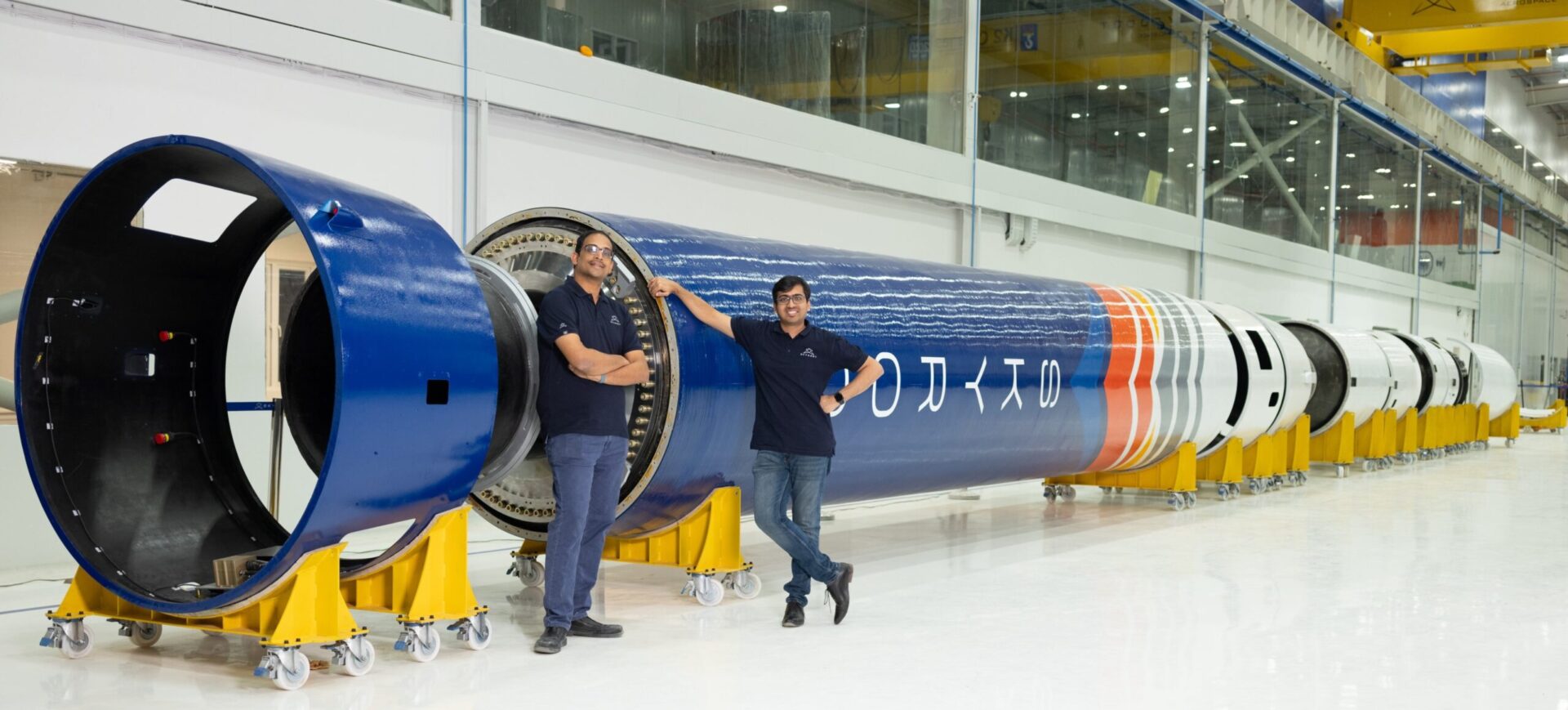Indian space startup SkyRoot Aerospace has unveiled India’s first privately designed and developed orbital-class rocket named ‘Vikram-1’. The company aims to conduct its inaugural space mission in the first quarter of 2025. This milestone marks a significant achievement for India’s private space industry.
Vikram-1 rocket is developed to provide satellite launch services at a very economical price, other rockets from ISRO and other conventional space agencies provide these services at a very high cost. ISRO (Indian Space Research Organisation) is also developing India’s 2nd space launch station in Kulasekharapatnam to provide launching pads to India’s space startups.
Vikram-1 rocket is in direct competition with ISRO’s SSLV rocket, the objective of both rockets is almost the same to launch small satellites on-demand, reliably, and affordably.

The rocket is a high-tech vehicle with a fully carbon fiber body, capable of deploying multiple satellites into orbit. It also features state-of-the-art 3D-printed liquid engines, enhancing its advanced technology. As tall as a 7-story building, this is the startup’s second rocket and comes after the country’s first privately-made rocket, ‘Vikram-S’.
The name ‘Vikram’ in the names of spacecraft pays tribute to Vikram Sarabhai, the visionary behind India’s space program.
Also read: SSLV (Small Satellite Launch Vehicle): India’s new rocket for a new market
Specification of Vikram-1 rocket
| Payload | Up to 500 kgs in low earth orbit and sun-synchronous polar orbit |
| Stages | 4 ( 3 solid fuel stage + 1 optional liquid fuel stage) |
| 1st stage | Powered by Kalam-1200 engine |
| 2nd stage | Powered by Kalam-250 |
| Responsiveness | Can be assembled and launched within 24 hours from any launch site |
| Architecture | Solid propulsion stages, Modern avionics, and ultra-low shock pneumatic separation |
| Flexibility | Orbital adjustment module with restart capability and multi-orbit insertion |
| Economics | Lowest cost in the payload segment |

The Kalam-1200 motor is used to power the first stage of the Vikram-1 rocket, It is 10 meters long and made up of carbon fiber in single pieces by a multi-axis robotic machine in the Skyroot Aerospace manufacturing unit.
The Raman-I engine will be used in the Vikram-1 rocket to facilitate roll attitude control, allowing the rocket to manage its rotation and orientation effectively. The roll attitude control system plays a vital role in modifying the rocket’s aerodynamic characteristics throughout the entire journey, ensuring a smooth flight.
Globally, this rocket is being compared to the ‘Electron,’ a launch vehicle developed by the American startup ‘Rocket Lab.’ Another Indian startup, ‘Agnikul’ is also developing its rocket to capture the multi-billion-dollar market of small satellite launch vehicles.
Vikram-1 represents India’s inaugural privately designed and developed orbital-class rocket, marking a significant milestone in the wake of reforms in the country’s space sector. Vikram-I is one of a trio of rockets in the Vikram series of Skyroot Aerospace, and two others, Vikram-II and Vikram-III, are currently in development. These upcoming rockets will be capable of carrying heavy payloads into various orbits.
The development of the Vikram series rockets marks a significant step forward in manufacturing technology. One crucial aspect is its cutting-edge 3D-printed propellant injector, which the company claims enhances the engine’s efficiency by reducing its weight by up to 50%. Additionally, it streamlines the production process by minimizing essential components. This innovation is a game-changer, reducing manufacturing time by as much as 80%.
Skyroot Aerospace was founded on 12th June 2018 by Pawan Kumar Chandana and Naga Bharat Daka with seed funding of 10 crore rupees from Mukesh Bansal. Skyroot Aerospace has established its new headquarters in Hyderabad, Telangana, named ‘max-Q,’ which is the biggest private rocket development center in South Asia. The name ‘max-Q’ represents the maximum stress and load that a rocket undergoes during its journey into space.
Skyroot estimated 20,000 small satellites will be launched by Vikram series rockets and satellite launching into space will be like booking a cab in the coming decade.
Read also: Kulasekhpatnam: India’s 2nd Satellite Launch Station
Read also: SPADEX – India’s Space Station by 2035
What is the name of Skyroot Aerospace’s headquarters?
‘Max-Q’ is the headquarters of Skyroot Aerospace which is situated in Hyderabad, Telangana. The name ‘max-Q’ represents the maximum stress and load that a rocket undergoes during its journey into space.


